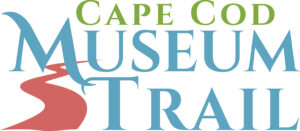Recently, a young Barnstable summer resident made a fascinating discovery along the shore. Ten-year-old Sean Regan, an avid beachcomber, succeeded in what many young boys dream of: he found an arrowhead!
In the Regan family’s quest to find out more about this artifact, they sought the help of the Barnstable Historical Society, who in turn contacted an archaeologist working with the Cape Cod Museum of Natural History. He instantly recognized the “arrowhead” as a Squibnocket Triangle projectile point and was pleased to not have to tell another person their special find is “just a rock.” This was the real deal.
Squibnocket Triangles were a common style of dart or spear tip used by local Native Americans between 3,000 and 5,000 years ago. This point style pre-dates the bow and arrow. Instead, it would be attached to a shaft that could be launched with a spear-throwing device called an atlatl.
This particular projectile point is made of quartz, which is the dominant choice of stone for Squibnocket Triangles. Only certain stones—those with certain predictable fracture properties and hardness—can be successfully chipped into a tool. Quartz is a type of stone that meets these requirements, and is locally abundant in cobble form along the beach.
This projectile point was made and used by a member of a hunting, gathering, and fishing community that made Cape Cod their home long before the arrival of Europeans. Artifacts such as this one exhibit how evidence of the past can persist into the modern day, and they are a testament to the long and rich history of this landscape.
The find has been reported to the Massachusetts Historical Commission, and the location has been added to their archaeological site inventory. Having this site listed in the state’s inventory will help aid the direction of future archaeological studies. Dan commends the Regan family for sharing their find and their support for making it a part of the official archaeological record.
This particular projectile point is made of quartz, which is the dominant choice of stone for Squibnocket Triangles. Only certain stones—those with certain predictable fracture properties and hardness—can be successfully chipped into a tool. Quartz is a type of stone that meets these requirements, and is locally abundant in cobble form along the beach.
This projectile point was made and used by a member of a hunting, gathering, and fishing community that made Cape Cod their home long before the arrival of Europeans. Artifacts such as this one exhibit how evidence of the past can persist into the modern day, and they are a testament to the long and rich history of this landscape.
The find has been reported to the Massachusetts Historical Commission, and the location has been added to their archaeological site inventory. Having this site listed in the state’s inventory will help aid the direction of future archaeological studies. Dan commends the Regan family for sharing their find and their support for making it a part of the official archaeological record.



Leave A Comment